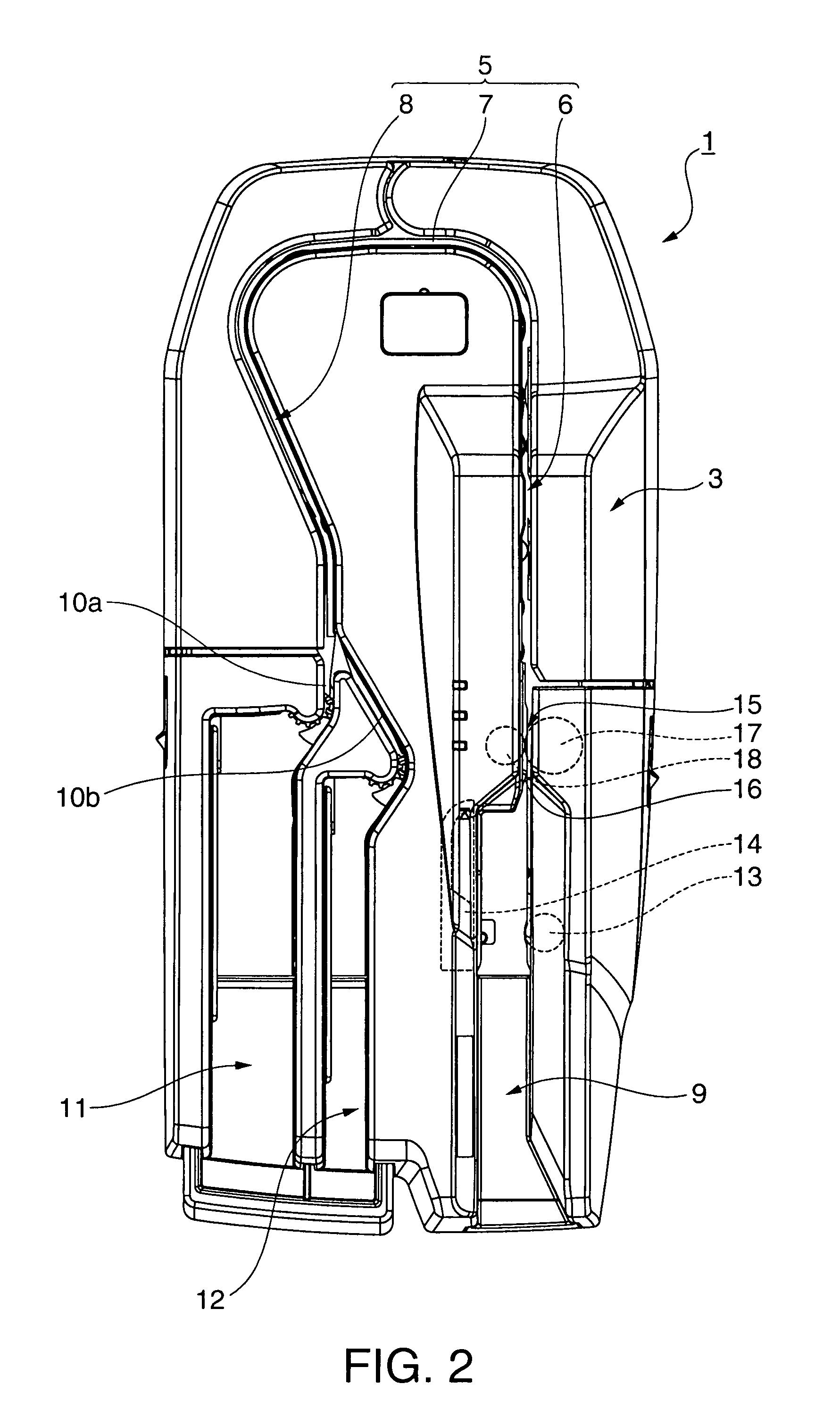Media processing device
a technology of a processing device and a media, applied in the direction of thin material processing, article separation, function indicators, etc., can solve the problem of slack produced by the difference in roller speed, and achieve the effect of not increasing the nip pressure of the transportation roller
- Summary
- Abstract
- Description
- Claims
- Application Information
AI Technical Summary
Benefits of technology
Problems solved by technology
Method used
Image
Examples
Embodiment Construction
[0032]A preferred embodiment of a check processing device according to the present invention is described below with reference to the accompanying figures.
[0033]FIG. 1 is an external oblique view of a check processing device 1 according to the invention, and FIG. 2 is a plan view of the same.
[0034]This check processing device 1 has a case 2 and a rear case 3 that covers the top of the case 2, and various parts and assemblies are disposed inside the case. A transportation path 5 for conveying checks 4 (sheet media) is formed in the rear case 3.
[0035]The check transportation path 5 is a narrow vertical slot that curves in a basically U-shaped configuration when seen from above, and includes a straight upstream-side transportation path portion 6, a curved transportation path portion 7 that continues from the upstream-side transportation path portion 6, and a slightly curving downstream-side transportation path portion 8 that continues from the curved transportation path portion 7.
[0036...
PUM
| Property | Measurement | Unit |
|---|---|---|
| speed | aaaaa | aaaaa |
| velocity | aaaaa | aaaaa |
| angular velocity | aaaaa | aaaaa |
Abstract
Description
Claims
Application Information
 Login to View More
Login to View More - R&D
- Intellectual Property
- Life Sciences
- Materials
- Tech Scout
- Unparalleled Data Quality
- Higher Quality Content
- 60% Fewer Hallucinations
Browse by: Latest US Patents, China's latest patents, Technical Efficacy Thesaurus, Application Domain, Technology Topic, Popular Technical Reports.
© 2025 PatSnap. All rights reserved.Legal|Privacy policy|Modern Slavery Act Transparency Statement|Sitemap|About US| Contact US: help@patsnap.com



